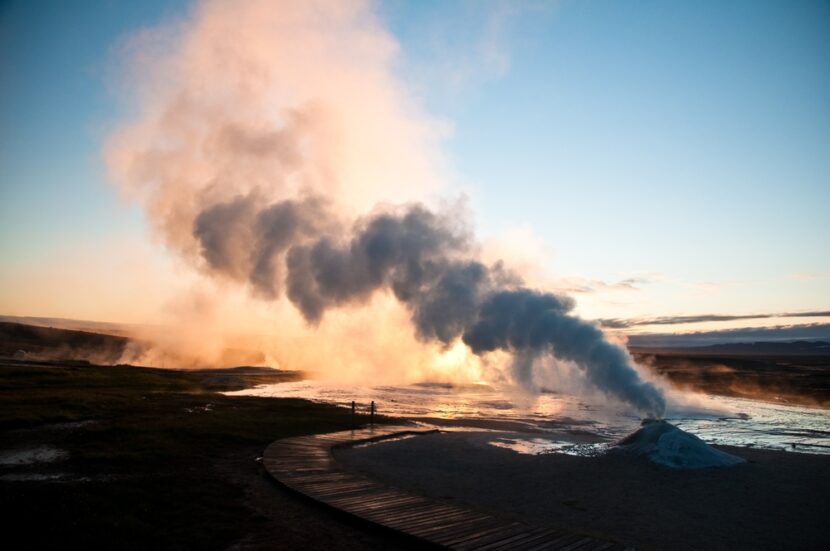REYKJAVIK, Iceland – Icelandic authorities briefly raised the aviation warning code to red Friday after a small fissure eruption near Bardarbunga volcano, but no volcanic ash has been detected by the radar system.
The eruption took place the Holuhraun lava field, 5 kilometres (3 miles) north of Dyngjujoekull glacier, Iceland’s Meteorological Office said. The event was described as being not highly explosive – and thus not producing much of the fine ash that can affect aircraft engines.
The airspace is closed three nautical miles around the eruption area up to 5,000 feet (1,524 metres) – meaning it does not affect commercial flights flying over Iceland. The aviation code for Bardarbunga was originally raised to red but was lowered to orange since there is no significant ash production, the Civil Protection Department said.
“If this eruption persists it could become a tourist attraction, as it will be relatively safe to approach, although the area is remote,” said David Rothery, a professor of Planetary Geosciences at The Open University in Britain. “This event should not be seen as ‘relieving the pressure’ on Bardarbunga itself, nor is it a clear precursor sign of an impending Bardarbunga eruption.”
The so-called fissure eruption, meaning it is a crack that opens up above a magma intrusion, is about 1 kilometre (half a mile) long and currently is not producing any significant ash.
So far the eruption shows no sign of being as disruptive as the one in 2010, when Iceland’s Eyjafjallajoekull volcano erupted and sparked a week of international aviation chaos. Thousands of flights were cancelled when aviation officials closed Europe’s air space for five days, fearing that volcanic ash could harm jet engines.
Since Thursday night, the National Crisis Coordination Center and local co-ordinationcentres have been activated and are operating on an emergency basis. All access to the area where the eruption is occurring is closed.
